Bezoar Ibex in Turkey (Part 1); Way More than a Hunt
Tim Herald 02.07.18
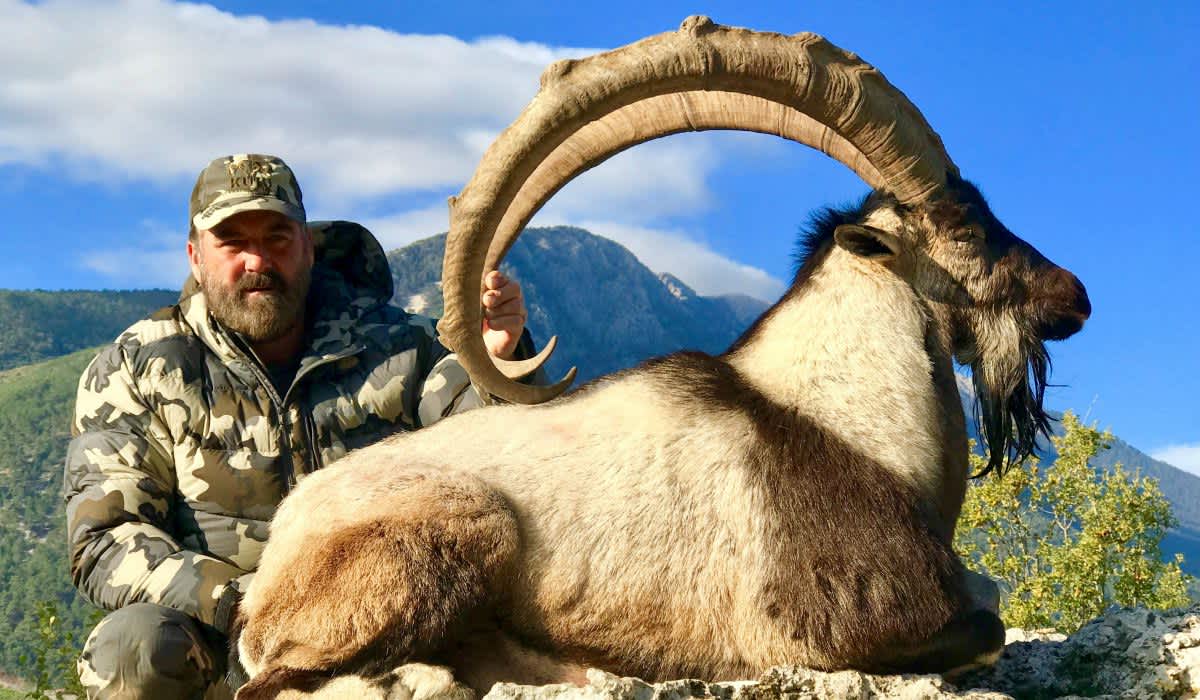
In October 2017, I did a mid-Asian ibex hunt in Kyrgyzstan that saw me return home with a giant billy, a broken rib and a severely torn muscle in my back. Click here to read about it. The hunt was great, but I was in a lot of pain during and after the trip, and I was a bit apprehensive about a December 2017 WTA Bezoar ibex group hunt to Turkey.
I knew that a Bezoar hunt wouldn’t be nearly as demanding as the Kyrgyzstan trip. We’d be staying in a local hotel, eating in restaurants, and most importantly, there would be no horses.

I also knew that the hunt could be tailored to the physical abilities of each individual, but the Taurus Mountains are extremely steep, and I wanted to be as fit as possible to give myself the best chances at taking the best billy I could find. I wanted to go hard in the mountains and not be miserable doing it.
I laid off a couple weeks and let my body heal, and then I got back to the gym training for Turkey. I concentrated on core exercises and lots of cardio, and I felt pretty good when we left the week after Thanksgiving.
As always, my goal was a mature animal that was a “good” one for the area. I didn’t need any world record, but I also didn’t want to shoot a younger or smaller billy. After talking with our outfitter, Kaan Karakaya of Shikar Safaris, I settled in on looking for a male in the 45- to 46-inch range. Of course, I didn’t know how many ibex of that caliber would be around.
The first morning as we all were headed to check our rifles after the flights, we pulled over at a local market for some tea, and one of the guides pointed out a billy up in the cliffs above us. We were told that he would go about 45 inches, and I thought to myself, I’d be very happy to take a billy like that one. He was beautiful with long curving horns, a beautiful two-tone coat, and a full, mature-looking beard. He was exactly what I had pictured in my mind as a trophy ibex.
I started off hunting with my good friend Tom Neiderer, whom I shared the Kyrgy hunt with, among many others over the past couple years. The first day, we combed the mountains and saw many good billies. Neither Tom or I had expected the ibex population to be so high, so Tom wanted to look for something really special.
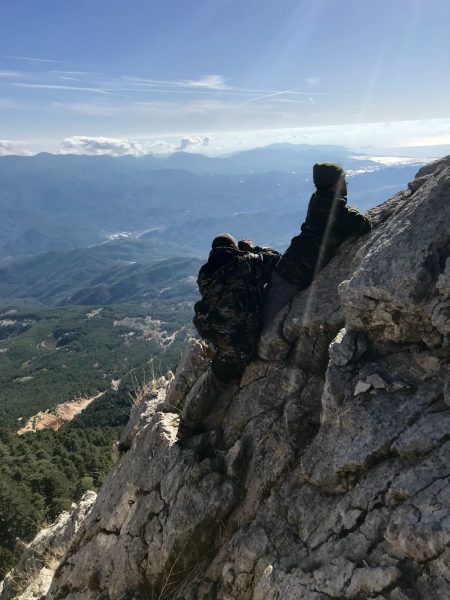
Toward the end of the first day, Tom and a local guide made a stalk on a billy that we glassed from about a mile away, but darkness ended the hunt before the pair could get into position to properly judge the billy or get a shot.
My good friend Jay Cohea was the first to score with a great old billy on day one. That got us all pumped up for the next day, and we were raring to go.
Tom and I split up on day two, and I went with a couple of the local guides to a remote area that saw us above the treeline, where there was only rocks and snow. Luckily, we could drive a 4×4 most of the way up, and then hike about 1.5 miles to a wonderful glassing spot. After an hour, we found two big billies about 1,200 yards away, but there was some steep and nasty country between us. My main guide told me that one was over 48 inches, but it had a foot of horn broken off on one side. The second billy looked just about as good, so we began a slow, cautious trek down and toward them.
We crossed a scree slope where the footing crumbled down with every step, down and up a couple steep drains, and finally we were 500 yards from where we last saw the billies. We spotted the broken billy making his way down the mountain, and we assumed the other was in front of him. We followed as best we could, but we were never able to catch up with the ibex. They have a much easier time descending the mountains than we humans, and I am sure at some point our noise put them into a higher gear.
It took us 6 hours to get close to the bottom of the mountain, and my knees were hammered from the constant downhill walking. We walked into a bit of an opening, and I was blown away by the sight. We had come into a large ancient city, complete with dozens of buildings, temples and an amphitheater. Being a history buff, I was just amazed, and I spent the next hour wondering around taking photos and checking the place out (below). I vowed to come back with some of the others at the end of the trip, and we were able to do that on our last morning in the area.
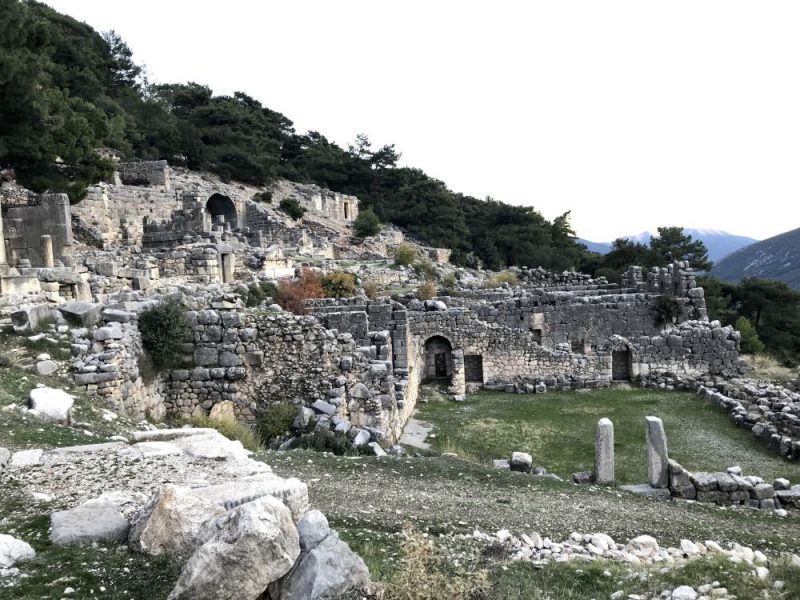
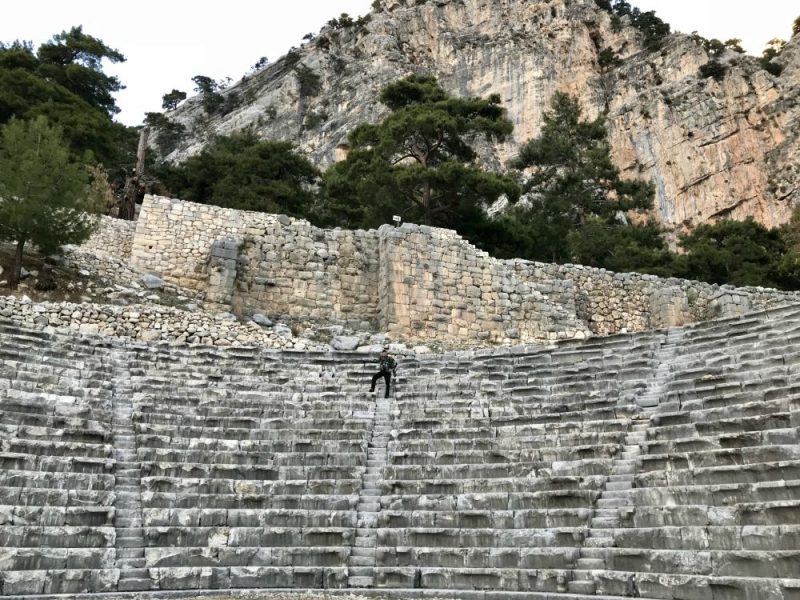
When our truck picked us up at the bottom of the mountain, I got the word that Tom had shot a billy, but they were not able to get to it before dark. He had shot it across a steep canyon, and there hadn’t been time to get up the sheer wall for recovery before light faded.
The next morning, they retrieved it with the help of some of the locals using many ropes and lowering it off the cliff. It was truly a super ibex. I met up with Tom mid-morning, and I got to see his old billy that measured 48.5 inches (below).
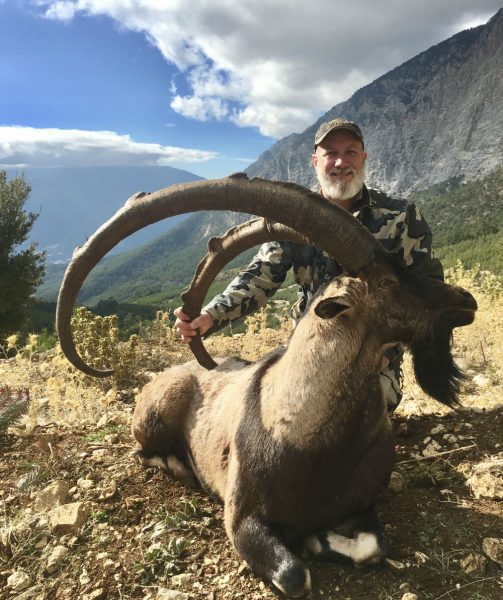
Jay had decided since he had shot on day one, he would buy another tag and continue to hunt. He said he wanted a monster or nothing this time around, and that day he and I went to the highest point around trying to find a billy that one of us would be happy with. We found a huge group of 70-100 ibex up in the snow and rocks, but there were no big billies. We just couldn’t believe it as the rut seemed to be in full swing, and every small band of nannies had a big boy or two with them. We knew when some of these nannies came into estrous, there would be a giant male show up to take over the huge harem.
Author’s Note: Stay tuned to OutdoorHub for the conclusion (part 2) of this hunt — including details of the amazing 50-inch ibex in the top photo!
Review: KUIU Yukon Jacket — A World-Class Outer Layer
On our hunt in Kyrgyzstan, I dropped my pack and some clothes on a stalk and an hour later, I had to wait on ibex and got cold. My buddy Tom loaned me his KUIU Yukon Jacket, and within a few minutes, I knew I was ordering one as soon as I got home.
I got mine and wore it as my outer layer on a South Dakota mule deer hunt, and then as my main jacket on this ibex hunt. The Yukon (below) is 100 percent waterproof and is a fantastic rain coat, but it’s also a great outer shell that really stops wind and cold.
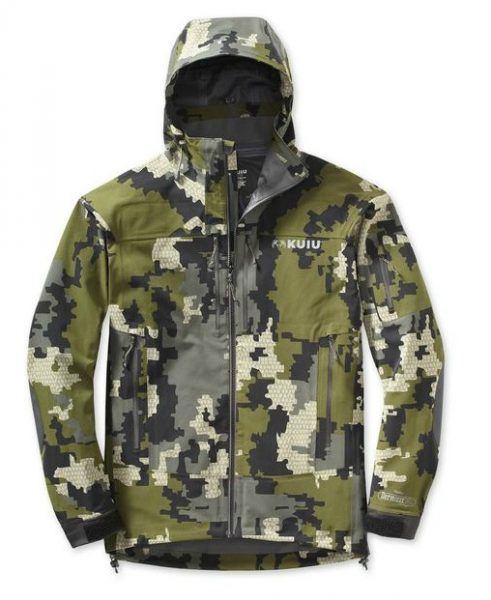
Technically, the Yukon Jacket uses a softshell-like abrasion-resistant face fabric that improves durability and reduces noise. It has three-layer, four-way stretch, reinforced and articulated elbows, and pit zips for breathability. Many hunters have completely replaced the need for a softshell with this jacket. To top it all off, the Yukon Jacket uses the same proven Dermizax NX membrane, which provides industry-leading waterproofness and breathability.
It is simply the best outer layer shell I have ever worn. The matching pants make for a great rugged outer layer that comes in awfully handy when you are hunting in rocky terrain, and dealing with windy conditions as we often did in the Taurus Mountains.
Editor’s note: Tim Herald is an owner and hunt consultant at Worldwide Trophy Adventures (WTA). To book this or any other high-quality hunt anywhere in the world, contact Tim at tim@trophyadventures.com. WTA’s services are free; WTA is paid directly by the outfitter, and your hunt cost is the same whether you book directly with an outfitter or through WTA.

